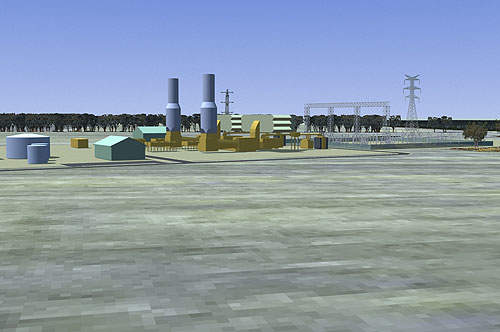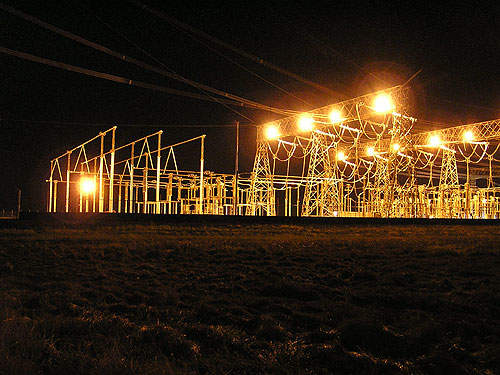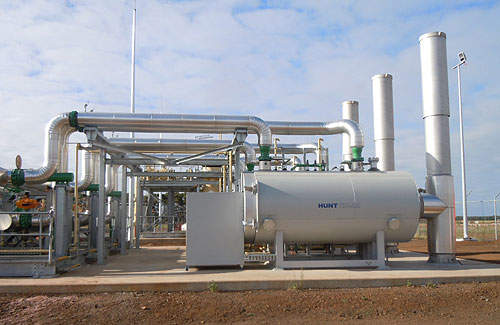The Mortlake Power Project is a combined gas-fired, open cycle, peaking power plant located 200km west of Melbourne near Mortlake Township in south-west Victoria, Australia. Currently under construction, the project is owned by Origin Energy.
The plant will have a nominal capacity of 1,000MW and is estimated to cost $1.2bn. The project is being developed in two stages. Stage 1 comprises construction of a 640m 550MW power station including a 83km-long dedicated gas pipeline. This phase broke ground in March 2009 and the plant is expected to come online in 2011.
The 450MW stage 2 will be developed in the future, depending on the electricity demand in the state.
Plant details
The Mortlake Power station and the 500MW switchyard will occupy an area of 20ha. It is surrounded by an extensive buffer zone. The plant building will be 30m high, with exhaust stacks measuring 45m above ground level.
The power station will house two Siemens SGTS 4000F-type gas turbines, each with a rated capacity of 275MW. The turbines weigh 288t and will be configured in an open cycle power generation system.
The plant will use natural gas as fuel to turn on the turbines. The natural gas will be transported through DN500 Class 900 high pressure pipeline specifically built for this purpose. The gas will be sourced from Lona Gas Plant in Port Campbell and processed at Origin Energy’s Otway Gas Processing plant in Warre, from where it will transported through the dedicated pipeline.
Water for cooling purposes will be sourced from a nearby bore and the Mortlake Waste water Treatment Plant through exiting water pipes.
Power from the plant will transmitted through the existing 500kV Moorabool to Heywood transmission line. The line has already been connected to the grid and will undergo final testing before being made live, ready for first fire.
Development of the Mortlake Power Project
The Mortlake Power Project financing was approved by Origin Energy in July 2008, nearly after five years of community consultation, environmental assessments and formal approvals.
The engineering, construction, procurement and management (ECPM) contract was awarded to Bilfinger Berger Services. The contract calls for the design and installation of the balance of plant including the fuel gas system, compressed air, de-mineralised water, raw water, fire protection system and the gas turbines.
The pipeline project was awarded to GPA Engineering on an EPC basis. AJ Lucas carried out the construction of the pipeline for GPA Engineering.
The pressure-reducing metering station at Lona Gas Plant was installed by Enerflux.
The company’s scope of work included identification and establishment of the site offices and workshop facilities, fabricating and installing the pipes from the pressure-reducing metering station to the main pipeline, fabricating and fitting skids in the company workshop and sites, fitting a new off-site control room, and performing all the associated electrical works.
AECOM provided the detailed design and consultancy services, which include the plant’s technical specifications, design and documentation of the switchyard, civil design services of the access roads, drainage system and other structures, and the design of the earth grid.
Roba Pipes will provide pre-fabrication works for the internal piping of steam turbines and generators.
Allianz Insurers provided insurance cover for the generators and turbines while being transported from the Port of Melbourne to the project site in 2009.
Construction of the Mortlake plant
The Mortlake plant site was chosen due to favourable factors such as easy access to the 500kV high voltage transmission line, proximity to the company’s gas reserves in the Otway Basin and well-serviced state roads and motorways.
Construction of the dedicated gas pipeline began in February 2009 and was completed in March 2010. The pipeline runs through 80 properties and passes through the districts of Timboon, Brucknell, Garvoc and Terang.
At some sites the pipes were placed underground by boring the ground horizontally. This was done to minimise the environmental impacts.
The 83km-long pipeline weighs 11,000t. It has a diameter of 508mm and was built by joining 18m-long pipes. Pressure is built in the pipes to transport 400 terajoules of natural gas a day.
Construction of the pressure-reducing metering station and other associated electrical works commenced in December 2009 and was completed in April 2010.






